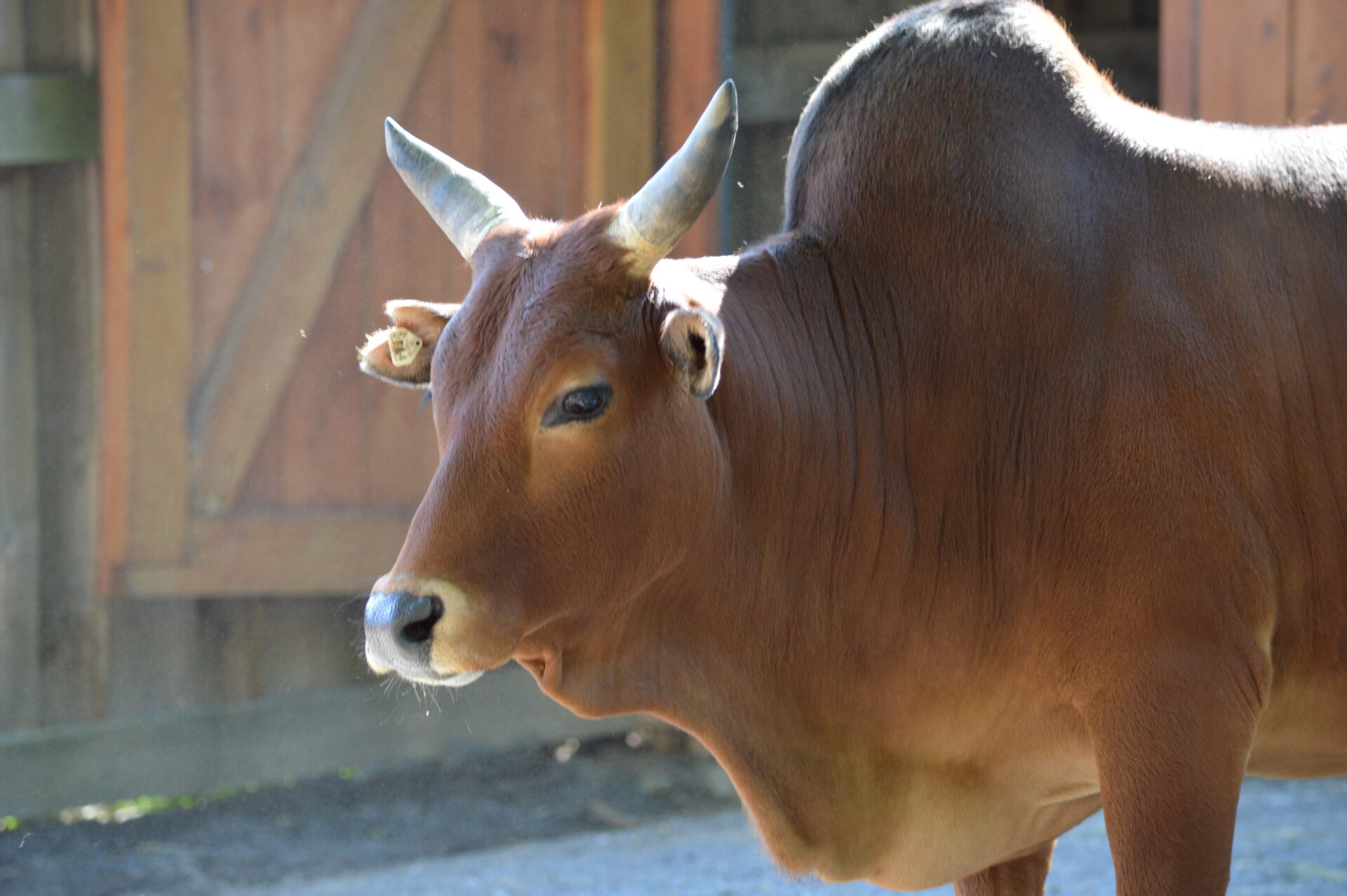Zebu

Basic Information:
Scientific Name: Bos taurus indicus
Habitat: While domesticated Zebu can be found on most continents, they are most common in South East Asia.
Diet: Zebu primarily eat grass, but have been known to eat seeds, leaves, and flowers as well.
Size: 3.5 to 5 feet tall / 3.5 to 4 feet long
Weight: 330 to 600+ pounds
Lifespan: 15 to 20 years
Distribution Map:
I.U.C.N. Conservation Status:

What does this mean?
Least Concern – a species determined by the International Union for Conservation of Nature (I.U.C.N.) to be pervasive, abundant, and thriving.
Our Zebu:
Zeke (Male)– Born April 9, 2008
Zack* (Male) – Born September 23, 2018
Ziti* (Male) – Born August 10, 2023
*Zack & Ziti are Miniature Zebus
About Zebus:
Thought to have originated from India, Zebu are a domesticated bovine from the jungles of South Asia that are valued for their milk, meat, leather, and horns. They are one of the oldest breeds of cattle that we know of dating back as far as 6000 BC. Today, reports show that there could be up to 70 different Zebu cattle types in the world. They are distinguished by their large dewlap and the hump on their upper back. The latter – like a camel’s hump – is used to store fat which is then used in hot, dry spells when access to food and water is limited. While they can be used for food, most areas use them primarily for hauling, riding, and dairy. In fact, Zebu are considered holy by Hinduism in their homeland of India.
Did You Know?!
- Zebu are very hardy and healthy due to being both parasite AND disease resistant.
- Just like in camels, a zebu’s hump serves as a reservoir of fat that can be used as a source of energy when regular food is not available.
- Both male and female zebus have horns.
